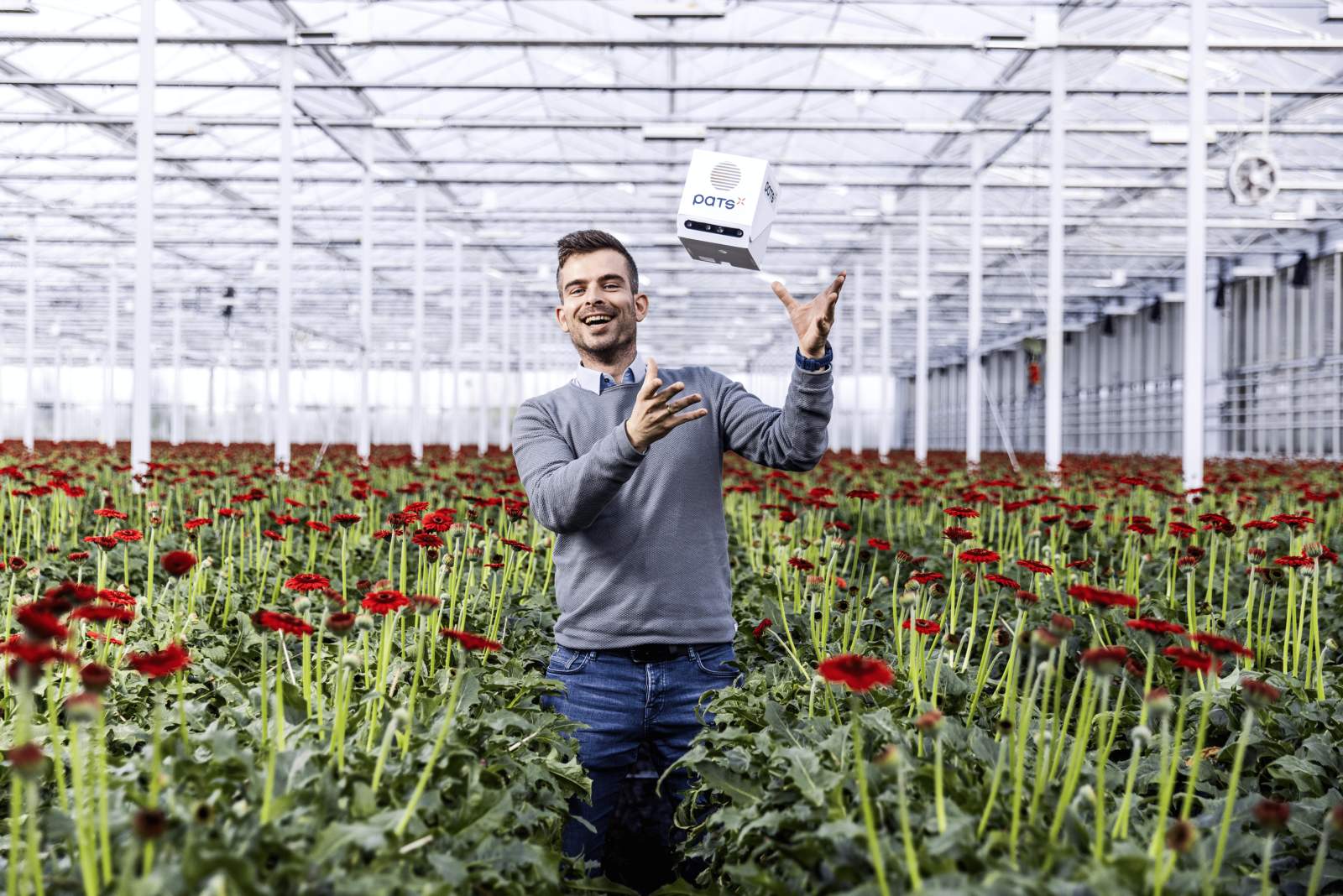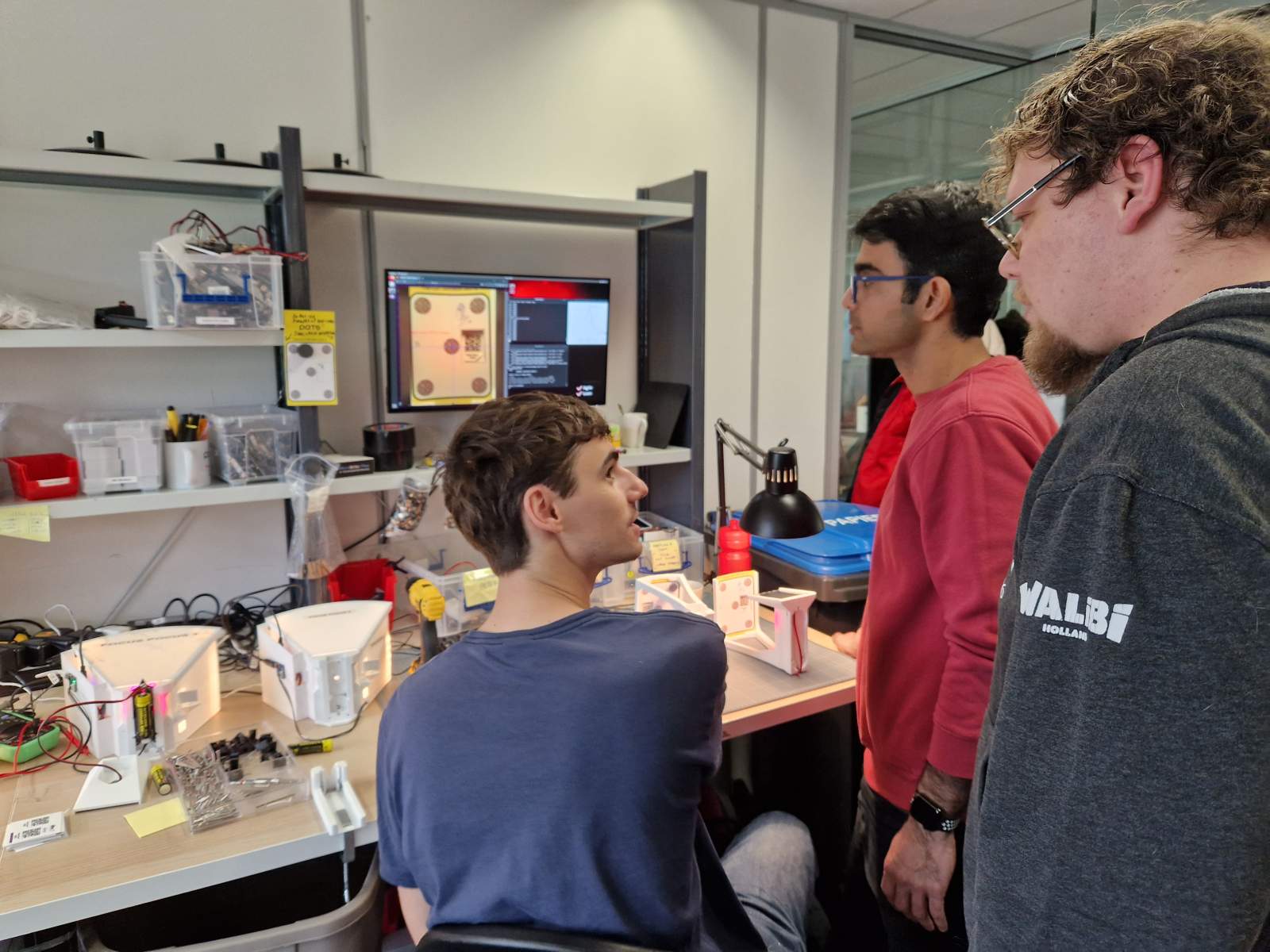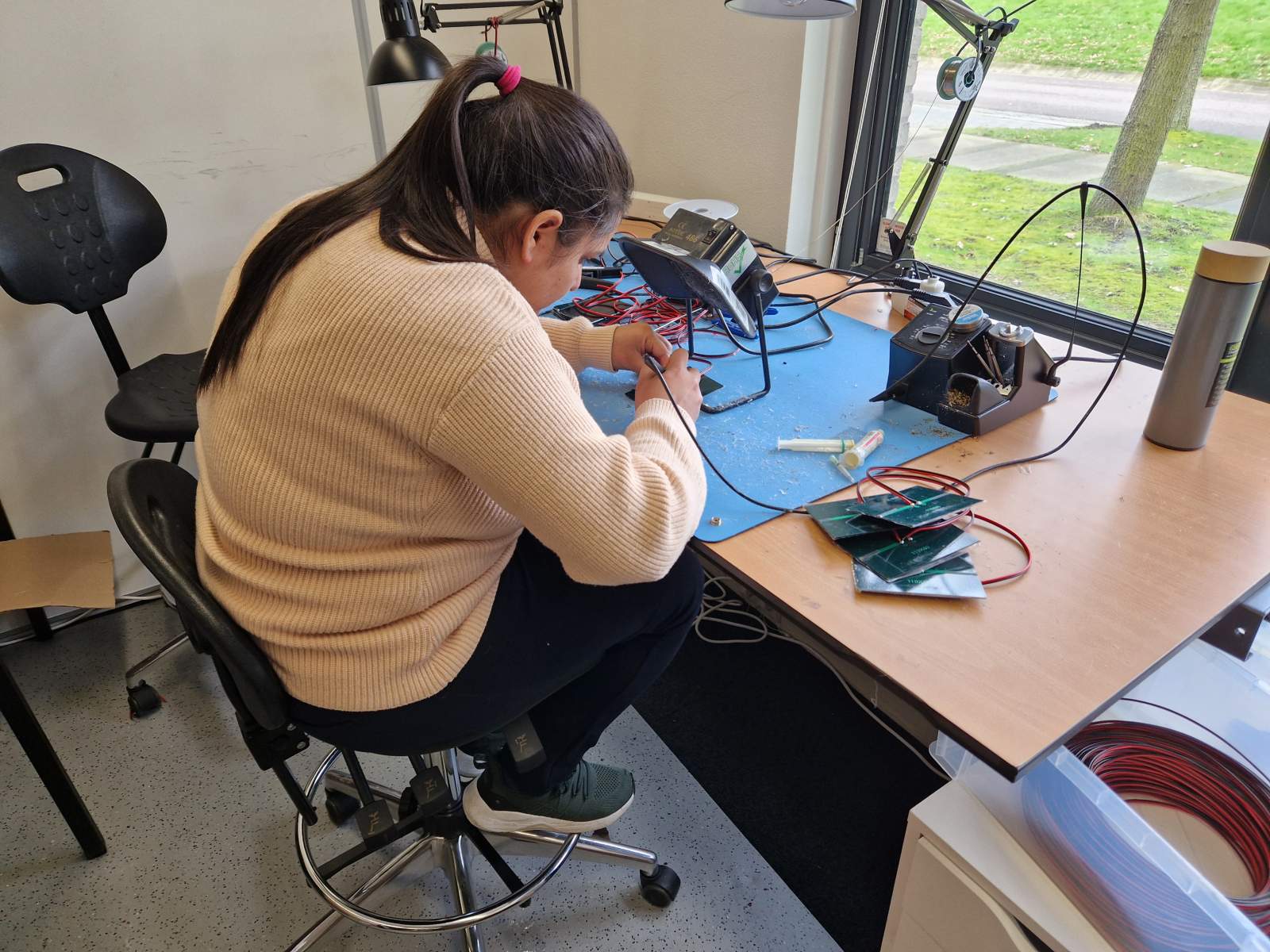PATS is developing innovative pest control technology for greenhouses, helping growers protect their harvest.
One of the fans’ most disliked episodes of the famous TV show Breaking Bad sees Walter White and his partner in crime, Jesse Pinkman, trying to catch a fly for the whole chapter. That same feeling of frustration gets us on summer nights; mosquitos and flies often keep us awake. But what happens if a mosquito keeps awake two drone experts? They begin thinking about creative solutions to hunt the hated flying object down, involving copters, lasers, and sensors. And they eventually start a company called PATS– as for an insect swatting sound.
Rather than focusing on our bedrooms, the Delft-based company focuses on insect control in greenhouse crops. It developed a platform – consisting of different tools – that detects insects and offers growers insights on the state of their cultivation, spotting pests in advance. It tracks and recognizes different insect species through cameras and AI algorithms, sending all info to a dedicated dashboard growers can access. This way, they can make better-informed decisions on how to treat the crops. Soon, PATS plans to integrate drones into its system to catch insects before they spread pests.
Bram Tijmons is the company's lively and energetic CEO. He welcomed Innovation Origins to the start-up Delft’s Tech Park office. With a background in business administration, he founded the company with his brother Sjoerd Tijmons and Kevin van Hecke. They were working at the Delft University of Technology’s Micro Air Vehicle Laboratory (MAVLab)—and were kept awake by the now famous mosquito. PATS now impacts the greenhouse sector, as it has installed its technology in 25 countries.
Managing a nuisance differently
Despite being very controlled environments, greenhouses still have an influx of insects coming from outside. “For growers, insects are just a nuisance, like mice at home. If you could choose, you would not have them,” Tijmons adds. To prevent pests from spreading and jeopardizing harvest, growers mainly spray plants with pesticides. This practice is often unsustainable, —pesticides are behind soil, water, and air contamination—time-consuming, and doesn’t always yield a full grip on pests, often caught too late.
Around Delft, it’s not that hard to find greenhouses. It was no longer after the start of PATS in 2018 that the team reached out to growers to introduce their tech. Since the beginning, flower producers have been open to testing, given the pressing need for better solutions to tackle pests. Specifically, they got interested from Gerbera Daisy growers– this flower is often used in bouquets— who struggled to control a moth that affected their cultivations. So the team, which then developed the first rudimentary version of PATS-C, a tiny box equipped with cameras and sensors, immediately proved to spot flying insects during the first tests at one of the flower greenhouses.
“‘Can you please do something about of what you are seeing?’ the growers asked. We started doing bar charts just to see how many flights we recorded. It felt weird; the greenhouse was three hectares big, and we only installed one box. We were able to see 0,3 percent of the whole greenhouse. I thought it would never bring us anything, but it did. It turned out that we spotted pests weeks earlier in some cases, a lifetime when talking about insects,” recalls Tijmons.
Drones to take off
PATS, built on its early achievements, now offers a modular solution to control pests. PATS-C remains the system's foundation, the gateway that collects data. Complementary to the detecting box is Trap-Eye, a sticky trap equipped with a tiny camera that takes real-time snapshots of the insects that stick to the glue, sending information back to the system. Growers currently use sticky traps but have to either manually count and distinguish insects or upload pictures of the stickers to coupled software.
Drones will come next as an additional complement to the platform, enabling pest eradication. The company is currently testing their implementation. Tijmons shows a brief video of one of the tests. In principle, a small drone station is coupled to a control unit. When an infrared camera detects a malicious insect, the drone flies to hunt it down, catching it—all in a matter of seconds, as shown in the clip. “Our idea is to fly our drones just enough to keep insects' presence under a certain level,” clarifies Tijmons.
Trusted outsiders
PATS has an in-house production line. In another room of the corridor, a stack of 3D printers briskly produces all the parts needed for the control system and the sticky trap. Next to it is the assembly line, where the staff puts together the freshly printed components while other staff members discuss ways to optimize processes. A robotic arm stands out in another testing room equipped with working tools. Here, two engineers experiment with a robotic arm to upgrade and possibly automate the production line. At the moment, around twenty people work at the company.
Being an outsider in the farming world pays off, as per Tijmons. “Sometimes we know more than those who have been working on similar solutions for longer, and that’s because we look at the problem from a different perspective. Growers see the value of that; many of them are happy about what we do, and they are eager to work with our solutions,” the CEO proudly states.
Growth and change
Research continues, and based on the acquired knowledge, PATS knows all about species, flying patterns, and insect behaviors. “Whatever crop it is, we can deal with it, as long as there are flying insects,” says Tijmons. In the future, the Delft-based company might also adapt its solution to outdoor cultivation.
Yet, PATS positions itself as an ally of the conventional methods employed. While biological control of pests is active– mainly consisting of using other insects to suppress the malicious ones— epidemics can still show up, thus needing chemicals to stop them, yet making the previous efforts vain. Tijmons says his company wants growers to keep this evolution line “flat” to protect biological control.







